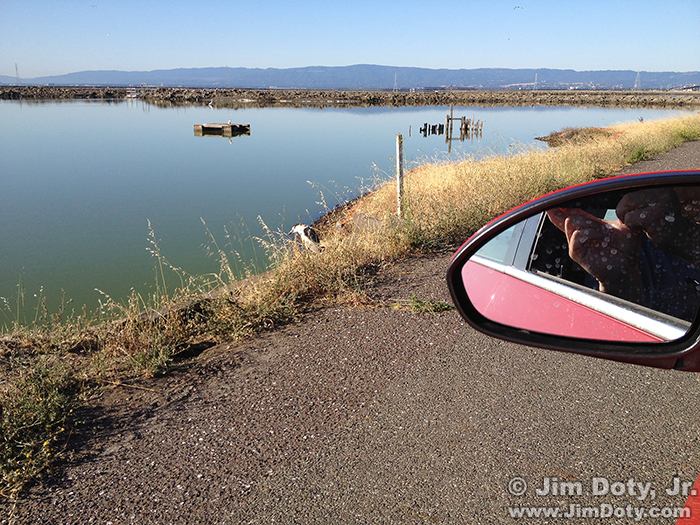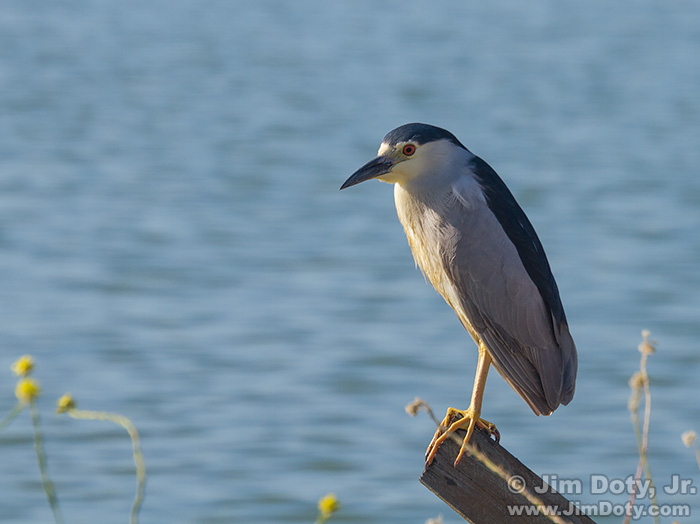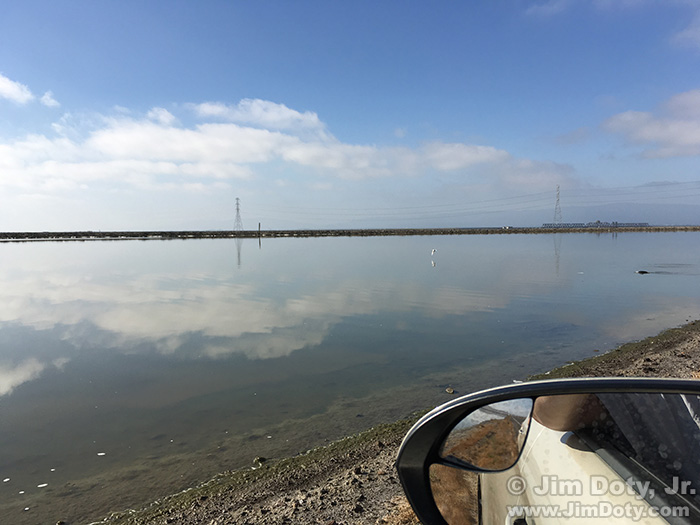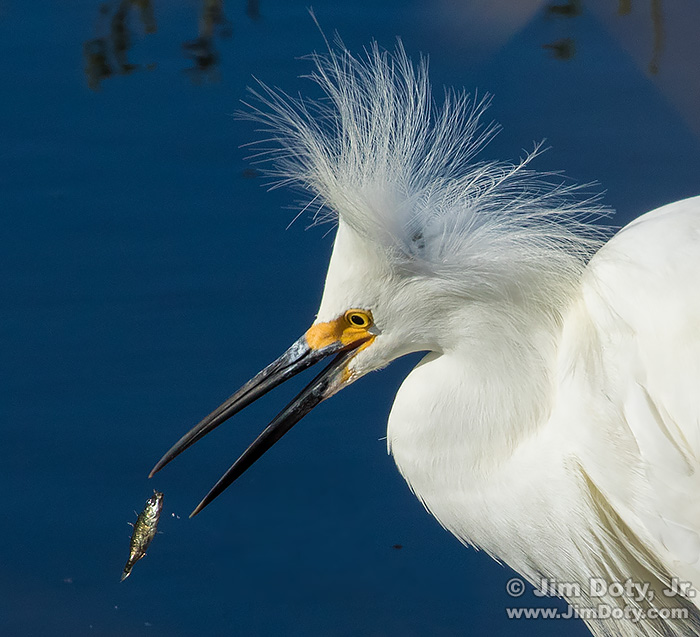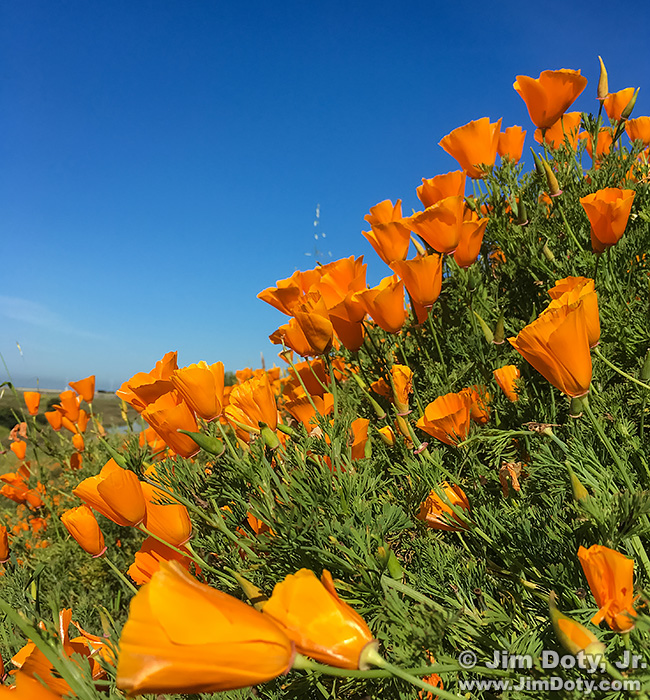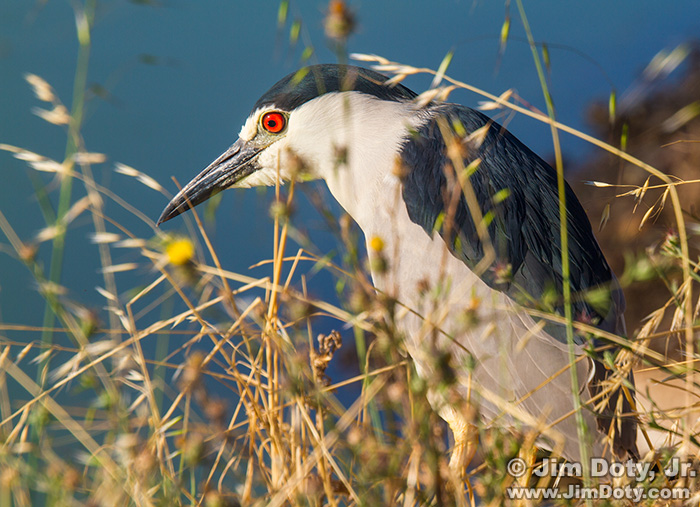
Black-crowned Night Heron, Don Edwards San Francisco Bay National Wildlife Refuge, Fremont, California.
I learned the hard way that a poorly positioned outside car mirror can cost you some great wildlife images.
Every time we fly to the San Francisco Bay Area to visit family, I spend a few mornings at one of my favorite spots, the Don Edwards San Francisco Bay National Wildlife Refuge. It is a great place to photograph wading birds.
We end up with a different rental car every time we go to California and most of them are not a problem for photography. A car makes a great blind since most wildlife will let you get much closer to them in a vehicle than on foot, but the animals do have their limits.
Shooting With A Good Mirror
This is as close as this Black-crowned Night Heron would let me get. The heron is pretty small in this iPhone photo, but looks great when photographed with a telephoto lens. This photo and the photo at the top of this article were taken about one minute apart from the exact same location.
Note how I have a clear, unobstructed view of the entire shoreline. This is important. A lot of wading birds will not let you pull up right next to them. So you need to be able to shoot at an angle looking forward. I could tell by the body language of this heron that this was as close as I could get.
The key to shooting wading birds at this location is to creep along the shore line at a slow speed as you approach a wading bird. Stop, turn off the engine (an idling car engine will blur your photos), and rest one or both elbows on the window ledge so you are steady enough to get a razor sharp shot. The test of sharpness is the bird’s eye. Another option is to nestle your lens into a bean bag (or a wadded up jacket) that is resting on the window ledge. After a few photos, turn on the motor, creep a little closer, turn off the motor, and shoot some more.
Shooting With A Bad Mirror
Now look at this mirror. It blocks a huge chunk of critical shoreline. I had an awful time shooting from this car. The wading birds to the right of the mirror were too far away. When the birds were at the optimum shooting spot they were behind the mirror. Before I could pull up far enough to see the birds on the left side of the mirror they would fly away. Even if I angled the mirror in it was so deep that it obstructed my view. The mirror was just too high and too far back.
I tried raising myself up high enough to shoot over the mirror but It was an awkward and unsteady position. It was really hard to get any nice, razor sharp photos. This mirror cost me some nice images. I was bummed. It was a photographically painful lesson.
If there is a lot of space between the water and the road you can park your car at an angle with the back of the car closer to the water and the front of the car closer to the road. That will give you a better angle of view. But that was not possible at this location. Plus getting the car into position may scare off the bird. Some birds are pretty tolerant but many aren’t.
Mirror Choices
Another car, another mirror. I had learned my lesson. This is a pretty good mirror. It intrudes just a bit into the shoreline, but not much. This is a workable mirror.
When I rent a car now, I pay attention to the side mirror. Is it too high or too far back on the door? I like my mirrors low and forward. I wouldn’t buy a car based on the side mirror, but if I was looking at two really good models that were pretty much even in other respects, I would be checking out the mirrors.
When a great photo op comes along, you don’t want a mirror to get in your way.
A Great Photo Location
If you are in the Bay Area and are looking for a great place to shoot, head for the Don Edwards San Francisco Bay National Wildlife Refuge. It is on the east side of the bay at the east end of the Dumbarton Bridge. Set your GPS to this address: 2 Marshlands Rd, Fremont, CA 94555.
You have different kinds of birds at each season of the year so it is always changing. Every day is different. One day can be amazing with birds everywhere. The very next day there is hardly a bird to be seen. That’s how it goes. This is the great outdoors, not a zoo.
If you are there in late March or early April you have a chance at some nice poppy images.
Photo Data
Black-crowned Night Heron: Canon 7D. Canon EF 70-300 f/4.5-5.6 DO IS lens. f/11, 1/200 sec, ISO 100.
Snowy Egret: Canon 7D Mark II. Canon EF 70-300 f/4.5-5.6 DO IS lens. f/11, 1/1000 sec, ISO 400.
California Golden Poppies. iPhone SE. Focal length 4.15mm (35mm equivalent: 29mm). f/2.2, 1/1800 sec, ISO 25.
Location Link
Don Edwards San Francisco Bay National Wildlife Refuge – the official site
Article Links
How to Be A Better Wildlife and Nature Photographer
Nature Photography Books: The Three Essentials
How To Find Wildlife, The Best Books
How To Photograph Wildlife, The Best Books

